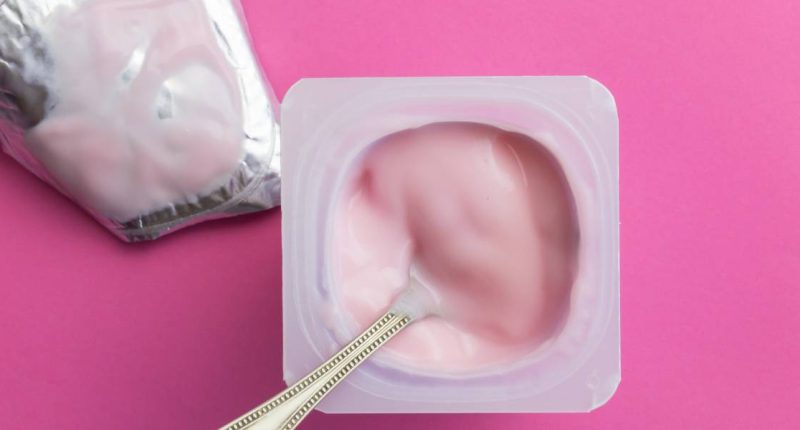Yoghurt labels to outline they can lower risk of type 2 diabetes despite containing high levels of sugar
Authorities in the US are allowing yoghurt makers to indicate on their product labels that their snacks can reduce the risk of type 2 diabetes, regardless of many being loaded with sugar.
According to the FDA, recent evidence has revealed that people who eat two cups of yoghurt per week are less likely to develop type 2 diabetes compared to those who eat none.
However, some people are slamming this claim due to many processed yoghurts containing a high content of sugar.
Eating a high amount of sugar is one of the top causes of type 2 diabetes – a condition which impacts roughly 16 million people in the US.
The US branch of the manufacturer of Dannon, Activia and Horizon Organics yoghurts submitted an application to the FDA in 2018 for its products be granted a qualified health claim.
It included information from prior research that identified that regularly eating yoghurt can reduce your risk of developing type 2 diabetes.
The FDA said: “There is some credible evidence of benefit from eating yoghurt as a whole food, but not because of any particular nutrient in it.”
Yoghurts can reduce the risk of type 2 diabetes because it has a low glycaemic index, meaning blood sugars do not spike when eating them, the study has reported.
In addition, research has found that a diet rich in low glycaemic index foods is associated with a lower risk of glucose and insulin resistance. Healthy micronutrients like calcium and vitamin D are also commonly found in yoghurts.
The advocacy group Center for Science in the Public Interest said: “No single food can reduce the risk of a disease that is tied to overall diet.
“The label change might raise the risk of diabetes by encouraging consumption of yoghurt, including types that include added sugars, and mix-ins such as cookies and pretzels.”
A six-ounce cup of plain yoghurt can contain up to 13 grams of sugar, while the same size of fruit yoghurt could contain up to 29 grams.
The American Institute for Cancer Research stated: “Some of that sugar comes from the fruit, but most of it is added sugar. It would take an entire cup of sliced strawberries to reach 10 grams of natural fruit sugar.”
Marion Nestle, a food policy expert, said: “Qualified health claims based on limited evidence are ridiculous on their face. Translation: If you want to believe this, go ahead, but it’s not on the basis of evidence.”








